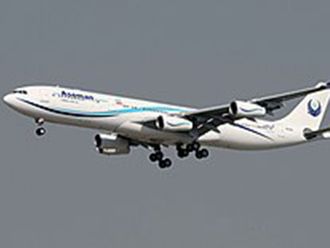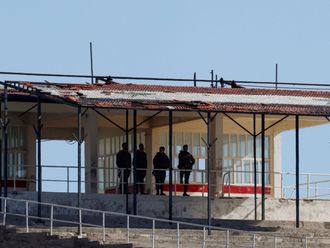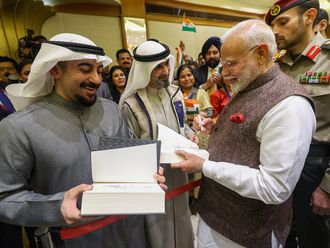
Dubai: The figures are promising for Arabic web content.
Internet penetration is growing. There is more online content, and more and more people are searching the internet in Arabic; their mother tongue.
Today, Arabic is available for several internet apps and services, most of which are under the umbrella of the internet giant Google or in partnership with it, such as YouTube.
New initiatives are finding their ways to the internet offering users more space to browse, watch and engage in Arabic.
Yet, the growth of internet penetration has not translated into equal growth for digital Arabic content, a recent report concluded.
“By 2017, over half of the Arab world [nearly 366 million] will have access to the internet, an increase from the 32 per cent that were online in 2012,” said a report created by both Jamil Wyne, head of the Wamda Research Lab (WRL) and Teeb Assaf, research analyst at WRL with support from Google and Taghreedat, which is an Arabic Digital Content (ADC) initiative aiming at increasing the quality and quantity of Arabic content on the web.
Huge spike
“Estimates suggest that the region has been home to the world’s largest increase in internet usage since 2001, experiencing 600 per cent growth in the number of users over this time period,” added the report.
“In fact the number of Arab internet users grew by 5,296.6 per cent from 2000-2013,” it said.
But the amount of Arabic content online is still low, it said.
Available figures on how much Arabic content is online vary between less than one per cent and 1.5 per cent. That is expected to reach three per cent in 2015.
However, Fayeq Owais, language services manager in Mena and emerging markets at Google, strongly believes a lot has been achieved in the past four years, when Google geared its efforts to increase Arabic content.
“I see that there are great improvements and great achievements in Arabic content online. I see that search results are giving us more content in Arabic… which means that there has been new generated content in the past four years,” he told Gulf News at Google offices in Dubai.
Also, “the accuracy of Google translation, which has millions and millions of users, is going up.”
“We see hundreds of additional file pages and social media with million of followers in Arabic,” he added.
Technology companies have also developed a system supporting Arabic script, and as a result of growing content, Arabic Wikipedia content ranks 13 out of 140 languages up from rank 22 in the past, Owais said.
Mina Takla, co-founder of Taghreedat, agreed. “In 2011, Twitter was not available in Arabic. In 2012, we worked with them to make an interface in Arabic and since then Arabic has become among the top five Twitter languages all over the world,” he told Gulf News.
Localisation
“So it shows how you would localise something, the demand, even if it is there, it really picks up,” Takla added.
On UN Arabic Language Day on December 18 last year, people tweeted 50,000 tweets in the first 24 hours, he continued.
There are an estimated 17 million tweets in Arabic every day and Arabic was the fastest growing language on Twitter between 2010 and 2011, the Wamda report said.
“Currently, the percentage of Arab speakers on the internet is 36.9 per cent with the Arabic language ranking fourth in the top 10 most-used languages online in 2013,” said the report.
Today, there are several initiatives to generate Arabic content online and boost the content. Many channels are posting videos and short programmes online that are watched by hundreds of thousands across the Arab region. Among those are “Kharabesh”, a Amman-based Arabic network of media, entertainment and animation and “Cairo dar”, a Cairo-based website that offers a comprehensive educational and entertainment information.
‘Untapped opportunities’
There are “businesses that are thriving in producing content in Arabic,” said Joyce Baz, Communications and Public Affairs, Middle East and North Africa at Google.
Apart from the business opportunities, there is a demand for more Arabic content.
“There are now more Arabic users online than English speakers in the region and with over half of Mena able to speak only Arabic, the need to create more DAC [Digital Arabic Content] is more important than ever,” the Wamda report said.
While there are many initiatives to boost the Arabic language online, some believe the younger generation of Arabs actually don’t speak and write Arabic. To prove this argument, they point at Arabizi, where young people use English letters to write Arabic words.
However, Owais hopes that this Arabizi phenomenon will eventually fade out.
But meanwhile, Christina Al Hayek, Language Specialist at Google said Arabizi “at least shows you that Arabic speakers think easily and express easily in Arabia, their mother tongue.”
Arabizi is a way youths uses to express their Arabic thoughts regardless as to whether they speak English or not, she continued.
Meanwhile, there are challenges facing the digital Arabic content, according to the Wamda report. They include the current few opportunities to generate revenue through advertising, bureaucracy and legal costs associated with combating piracy and lack of talent.
“I think there is general consensus that tapping into Arabic-only speaking populations is a very promising method of scaling, which means it’s attractive for investors,” said Wyne. “It’s not necessarily a top priority for all investors in the region, nor does it guarantee that a company will scale, but there is definitely a general belief that there are untapped opportunities within the Arabic language for digital content.”












